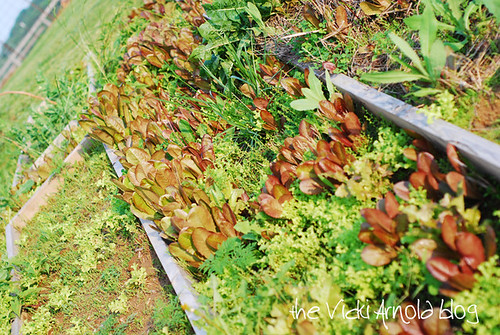You may be wondering why I would include this in my series on saving money. To be honest, it’s about much more than money. There is one definite way heirlooms save you money, but this goes much deeper than money.
Heirlooms are open-pollinated. If you save their seeds, you can grow the same plant/fruit the next year. And the year after that. And the year after that. You get the point. You can turn your $3 investment into a lifetime of food if you use heirlooms. Not so with Hybrids and genetically modified (GM) seeds.
Hybrids are a forced cross between plants. These do have the possibility to be stabilized and become open-pollinated. There are markings in seed catalogs that will let you know this. A marking of F1 is a first generation plant. You can not save true seed from these plants. Therefore, you have to purchase your seeds annually.
“The more seasons you grow an heirloom in your particular area, the stronger the plant will be in dealing with that area’s specific set of gardening troubles.” — GenericSeeds.com
Now, on to genetically modified organisms. Genetically modified food is more of a buying issue than a what-to-grow issue since the seeds aren’t readily available for backyard gardeners. However, this is what the majority of our commercial farms are using. You need to be aware of this.
Genetically modified seeds are something out of a science fiction horror movie, only real. Genetically modified organisms take the DNA from one species and insert it into another. They take genes from bacteria, viruses, animals, insects and humans, then insert them into the seeds along with antibiotic resistant “marker” genes (hmm, antibiotic resistant genes in our food…that sounds super).
Do you know what they are doing with genetic modification?
- potatoes that glowed in the dark when they needed watering (I’ll admit this one sounds kind of awesome, a plant that tells you when to water it…but what did they put in it to make it GLOW?)
- corn engineered with jellyfish genes
- engineering corn with hepatitis genes
- inserting jellyfish genes in pigs to make their noses glow in the dark
You can visit the FAQs page at Seeds of Deception for a whole lot more on GM seeds. I’ll share some sections that jumped out at me:
“Crops such as Bt cotton produce pesticides inside the plant. This kills or deters insects, saving the farmer from having to spray pesticides. The plants themselves are toxic, and not just to insects. Farmers in India, who let their sheep graze on Bt cotton plants after the harvest, saw thousands of sheep die!”
“Hasn’t research shown GM foods to be safe? No. The only feeding study done with humans showed that GMOs survived inside the stomach of the people eating GMO food. No follow-up studies were done. Various feeding studies in animals have resulted in potentially pre-cancerous cell growth, damaged immune systems, smaller brains, livers, and testicles, partial atrophy or increased density of the liver, odd shaped cell nuclei and other unexplained anomalies, false pregnancies and higher death rates.”
“In March 2001, the Center for Disease Control reported that food is responsible for twice the number of illnesses in the U.S. compared to estimates just seven years earlier. This increase roughly corresponds to the period when Americans have been eating GM food.”
“Q. Didn’t the scientists at the FDA study GM foods themselves? No. The FDA relies solely on information supplied by the biotech companies.”
Some further reading on organic seeds, GMO and seed saving:
- Organic Seed Alliance
- Why Should I Avoid GMOs?
- Seed Savers Exchange
- FAQs – Seeds of Deception
- Millions Against Monsanto by OrganicConsumers.org Facebook page
Books on saving seeds:
- Seed to Seed: Seed Saving and Growing Techniques for Vegetable Gardeners
- Seed Sowing and Saving: Step-by-Step Techniques for Collecting and Growing More Than 100 Vegetables, Flowers, and Herbs
- The Complete Guide to Saving Seeds: 322 Vegetables, Herbs, Fruits, Flowers, Trees and Shrubs (this is one hasn’t been released yet, but I want it so I thought I would share)
To bring this back to the point of saving money, here is a photo of last year’s lettuce bed taken yesterday:
Do you see all that lovely red romaine and gold rush lettuce?
I did not plant one single seed this year (well, that you see here).
To the left is the raised bed our lettuce occupied last year. As the weather heated up, the plants bolted. I harvested some of the seeds and have a legal size envelope full. Imagine my surprise this spring when all these little lovelies popped up, the plants reseeded themselves.
We had some for dinner the other night. Lovely. And free.
Further Reading: Where to buy heirloom seeds




Thank you for this post! I keep trying to explain to friends why GMO is bad and I keep falling short in the articulation department. A friend gave me my first heirloom plant today – a tomato! (Here’s hoping I don’t kill it.) =p
I love heirloom tomatoes! I’m glad you enjoyed the post. 🙂